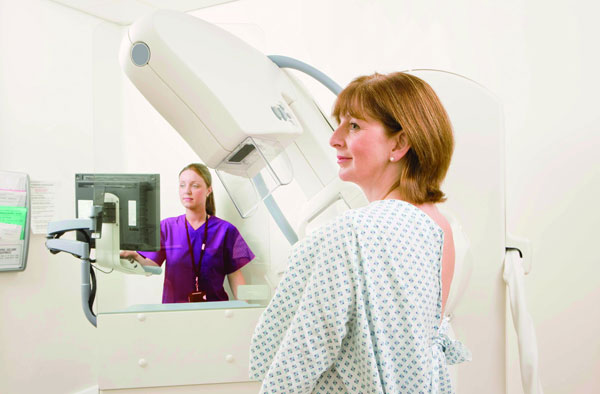
Adoption of new guidelines recommending screening mammography every two years for women ages 50 to 74 would result in breast cancer screening that is equally effective, while saving the United States $4.3 billion a year in health care costs, according to a study led by UC San Francisco.
The study compares three possible mammography screening strategies with a model of current U.S. screening practices.
The article appears on February 4, 2014 in Annals of Internal Medicine.
The authors call for the adoption of guidelines developed in 2009 by the U.S. Preventive Services Task Force (USPSTF). Under those guidelines, in addition to biennial screening for women age 50 to 74, women age 40 to 49 would be screened according to other risk factors, and women 75 and older would be screened depending on the presence or absence of other diseases.
The study was led by Laura J. Esserman, MD, MBA, professor of surgery and radiology at UCSF and an internationally known leader in the field of breast cancer.
“The USPSTF guidelines are based on the best scientific evidence to date,” said Esserman, director of the Carol Franc Buck Breast Care Center at the UCSF Helen Diller Family Comprehensive Cancer Care Center. “What we need now is a better way to assess breast cancer risk and implement a more risk-based approach to screening. We have demonstrated that the resources for doing this are already in the system. We should redirect them to learning, enabling change, and improving outcomes.”
According to the authors’ estimate, approximately 70 percent of women in the U.S. were screened for breast cancer in 2010, at a cost of $7.8 billion. Some women are screened annually, some biennially, and some are screened on an irregular basis.
The scientists compared this current picture of breast cancer screening with three simulated models: annual screening of 85 percent of women age 40 to 84, in accordance with recommendations from the American Cancer Society and many other policymaking organizations, at an annual estimated cost of $10.1 billion; biennial screening of 85 percent of women age 50 to 70, in line with guidelines used in many European countries, at an annual estimated cost of $2.6 billion; and screening in accordance with USPSTF recommendations, which the authors estimate would cost $3.5 billion per year at a screening rate of 85 percent.
“Over the last decade, in study after study, it has become very clear that — apart from limited, specific high risk groups — biennial screening is as effective as annual screening mammography,” said Esserman. “At the same time, annual screening is associated with a greater likelihood of false positive results, which have an adverse impact on women’s well-being and quality of life. From the viewpoint of women’s health, the USPSTF screening recommendations make sense.
“We can go one step further and learn who is at risk for what kind of breast cancer, and over time, further tailor screening by adjusting the age to start and frequency as well as include recommendations for prevention,” Esserman said.
Lead author Cristina O’Donoghue, MD, currently at the University of Illinois at Chicago but with UCSF at the time of the study, noted that the billions of dollars saved from avoiding less-effective mammography screening could be used to improve women’s health.
“We could increase women’s participation in screening, improve routine assessment of breast cancer risk and referral services for women at high risk, offer better genetic counseling for women with a family history of breast cancer and work on improving the quality of screening, with an emphasis on higher-quality mammography read by specialized mammographers,” said O’Donoghue. “These would be only some of the potential benefits of using our health care resources more intelligently.”
The study done by University of California – San Francisco.